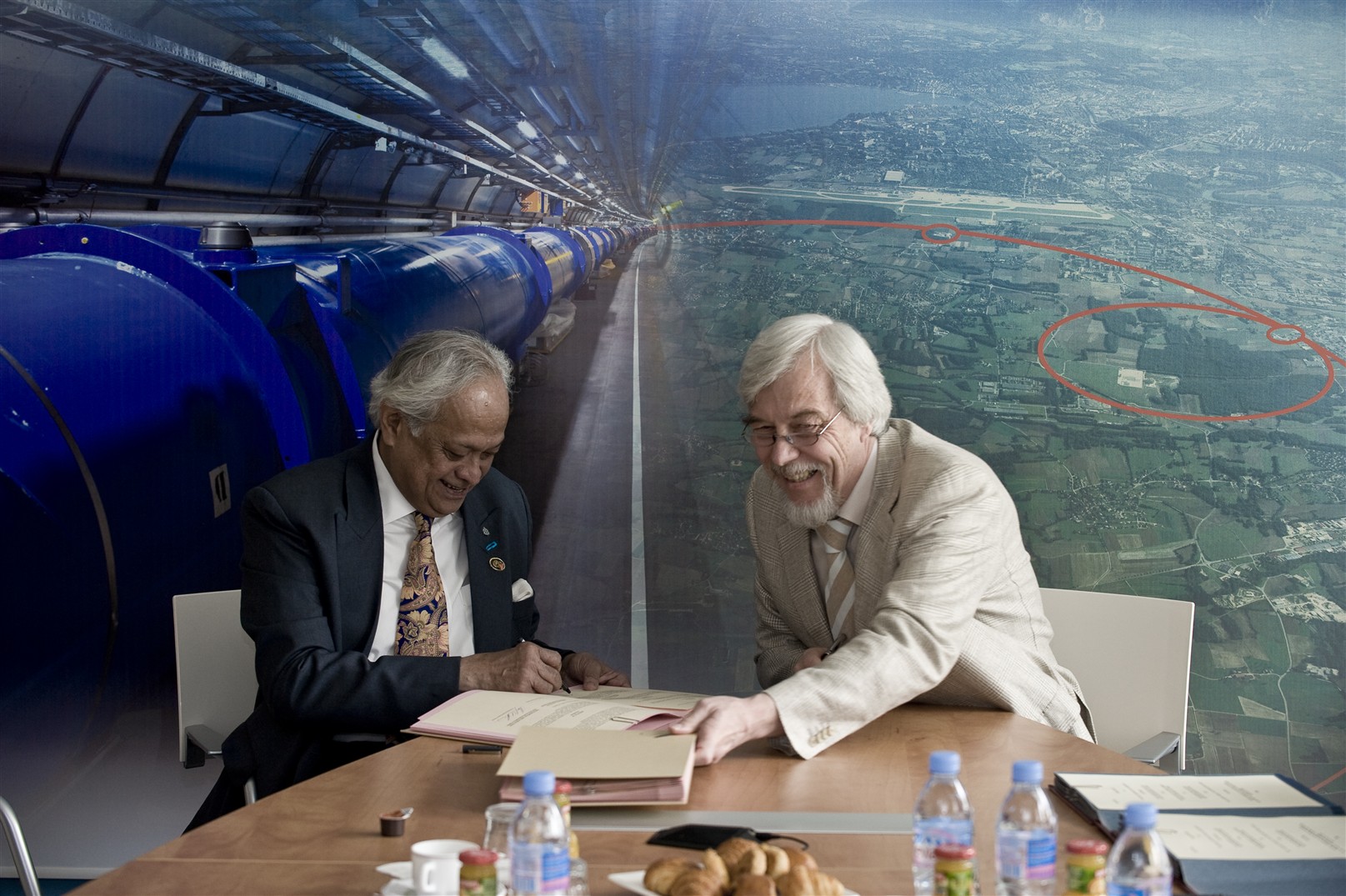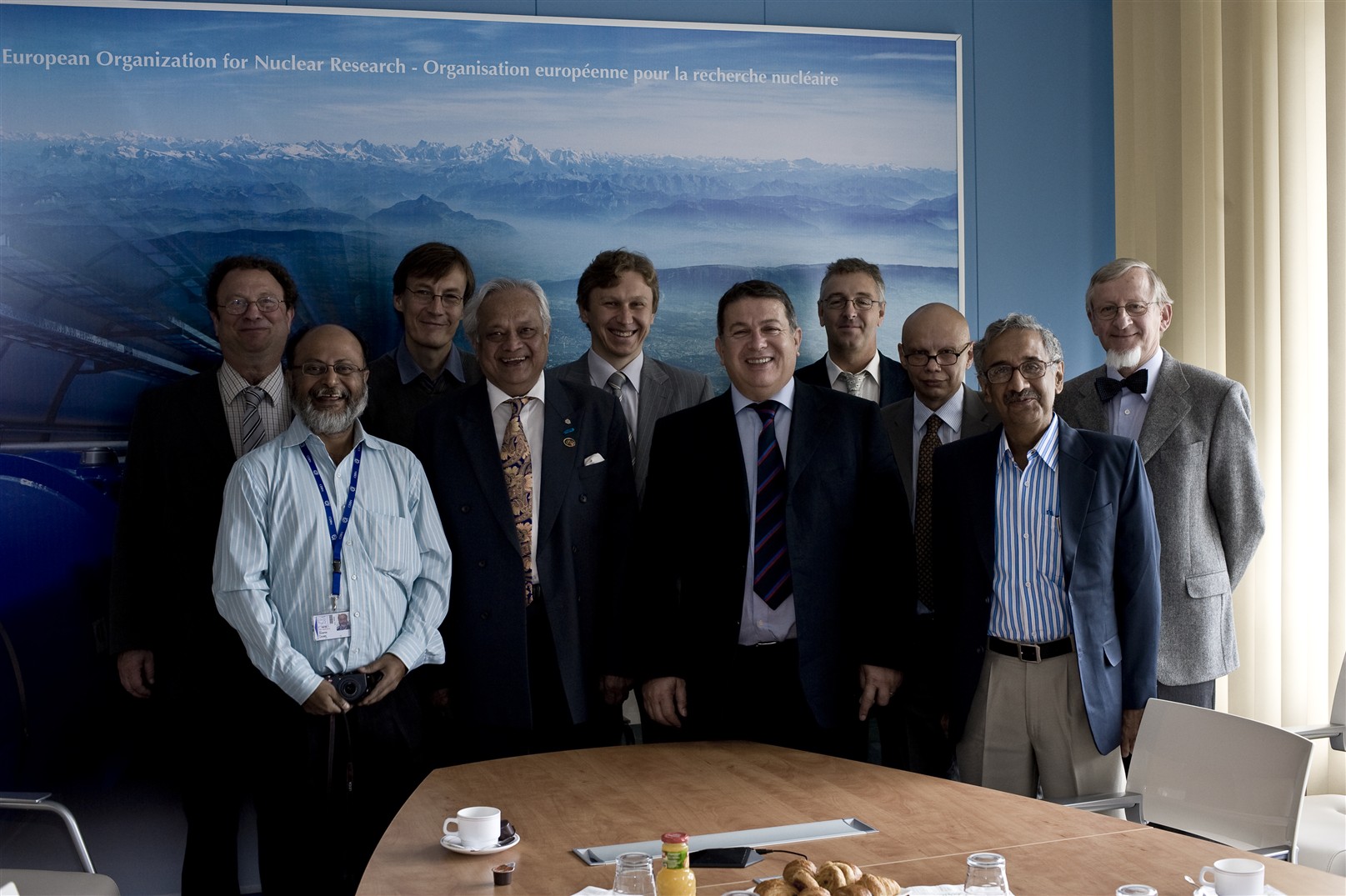Enhanced collaboration between CERN and India
On Monday 22 June, Bikash Sinha, Director of the SAHA Institute of Nuclear Physics (SINP) and the Variable Energy Cyclotron Centre (VECC) in Kolkata, India and Rolf Heuer, CERN Director-General, signed new protocols to the long standing agreement between the Indian Atomic Energy Commission and CERN. This provides a framework for collaboration in low energy nuclear physics between SAHA and VECC and the ISOLDE experiment at CERN.


INDIA has a long standing tradition in basic nuclear physics and nuclear chemistry. SINP is a leading institute for basic research and training in physical and biophysical sciences with particular competence in nuclear spectroscopy and nuclear chemistry. VECC is a premier R&D unit of the Indian Department of Atomic Energy. This Centre is dedicated to carry out frontier research and development in the fields of accelerator science & technology, nuclear science (theoretical and experimental), material science, computer science & technology and in other relevant areas. ISOLDE at CERN is a world-leading facility for the production and use of radioactive nuclear beams.
Scientists from both Indian institutes are looking forward to developing experiments in nuclear spectroscopy and nuclear chemistry at ISOLDE, which will enrich and enlarge the scope of the ISOLDE programme. The Indian institutes are promoting a project for a radioactive beam facility in Kolkata and will benefit from the experience gained over many years at ISOLDE. They will participate in common research and development for target materials, high power targets, ion sources and superconducting accelerator cavities for heavy nuclei. These protocols add an essential new facet to INDIA-CERN collaboration which now includes low-energy aspects in addition to high-energy particle and heavy-ion physics and accelerator development.
Immediately afterwords, another agreement was signed by Prof. Sinha and Prof. Sergio Bertolucci, Director for Research and Scientific Computing at CERN for the participation of the SAHA Institute for Nuclear Physics in the RD51 Collaboration. RD51 aims at the development of micro-pattern gas detectors like GEMs, Micromegas and Ingrid pixel detectors for applications in basic and applied research. Besides their widespread use in high-energy and nuclear physics, these detectors are employed in many other fields: astro-particle physics and applications such as medical imaging, material sciences, geology and security inspections. The collaboration comprises 64 institutes from 20 countries spanning four continents and about 350 participants. The SAHA institute is contributing in the area of detector simulation and has developed a software package for computing the electric field of a given device based on the boundary element method. The RD51 Collaboration is looking forward to fruitful collaboration on simulation issues and is helping the Indian colleagues to build, test and operate micro-pattern gas detectors.
This was an important day for INDIA-CERN relations, which will certainly lead to many forefront technical developments and exciting new scientific results.

